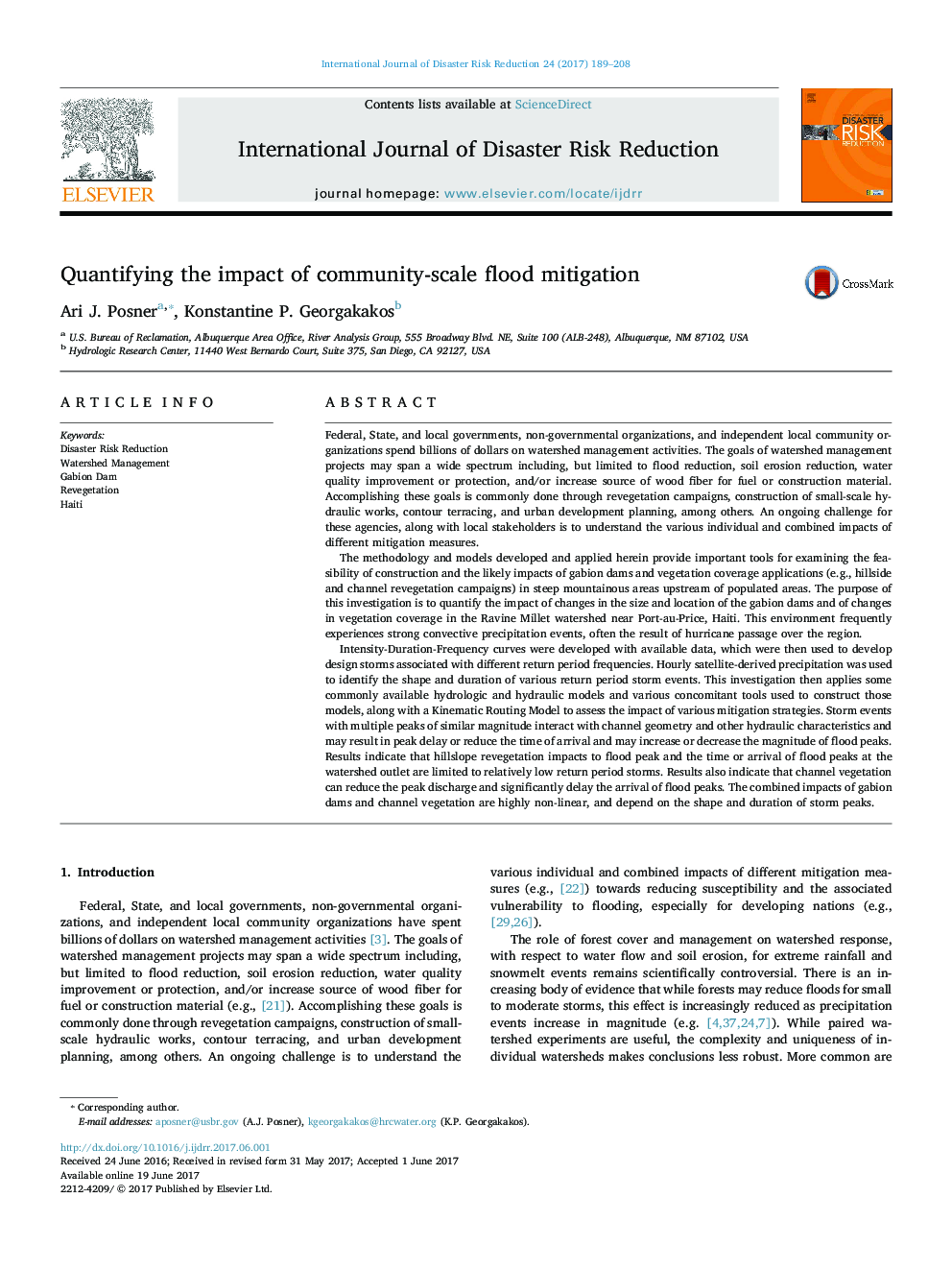| کد مقاله | کد نشریه | سال انتشار | مقاله انگلیسی | نسخه تمام متن |
|---|---|---|---|---|
| 5116028 | 1485146 | 2017 | 20 صفحه PDF | دانلود رایگان |

Federal, State, and local governments, non-governmental organizations, and independent local community organizations spend billions of dollars on watershed management activities. The goals of watershed management projects may span a wide spectrum including, but limited to flood reduction, soil erosion reduction, water quality improvement or protection, and/or increase source of wood fiber for fuel or construction material. Accomplishing these goals is commonly done through revegetation campaigns, construction of small-scale hydraulic works, contour terracing, and urban development planning, among others. An ongoing challenge for these agencies, along with local stakeholders is to understand the various individual and combined impacts of different mitigation measures.The methodology and models developed and applied herein provide important tools for examining the feasibility of construction and the likely impacts of gabion dams and vegetation coverage applications (e.g., hillside and channel revegetation campaigns) in steep mountainous areas upstream of populated areas. The purpose of this investigation is to quantify the impact of changes in the size and location of the gabion dams and of changes in vegetation coverage in the Ravine Millet watershed near Port-au-Price, Haiti. This environment frequently experiences strong convective precipitation events, often the result of hurricane passage over the region.Intensity-Duration-Frequency curves were developed with available data, which were then used to develop design storms associated with different return period frequencies. Hourly satellite-derived precipitation was used to identify the shape and duration of various return period storm events. This investigation then applies some commonly available hydrologic and hydraulic models and various concomitant tools used to construct those models, along with a Kinematic Routing Model to assess the impact of various mitigation strategies. Storm events with multiple peaks of similar magnitude interact with channel geometry and other hydraulic characteristics and may result in peak delay or reduce the time of arrival and may increase or decrease the magnitude of flood peaks. Results indicate that hillslope revegetation impacts to flood peak and the time or arrival of flood peaks at the watershed outlet are limited to relatively low return period storms. Results also indicate that channel vegetation can reduce the peak discharge and significantly delay the arrival of flood peaks. The combined impacts of gabion dams and channel vegetation are highly non-linear, and depend on the shape and duration of storm peaks.
Journal: International Journal of Disaster Risk Reduction - Volume 24, September 2017, Pages 189-208